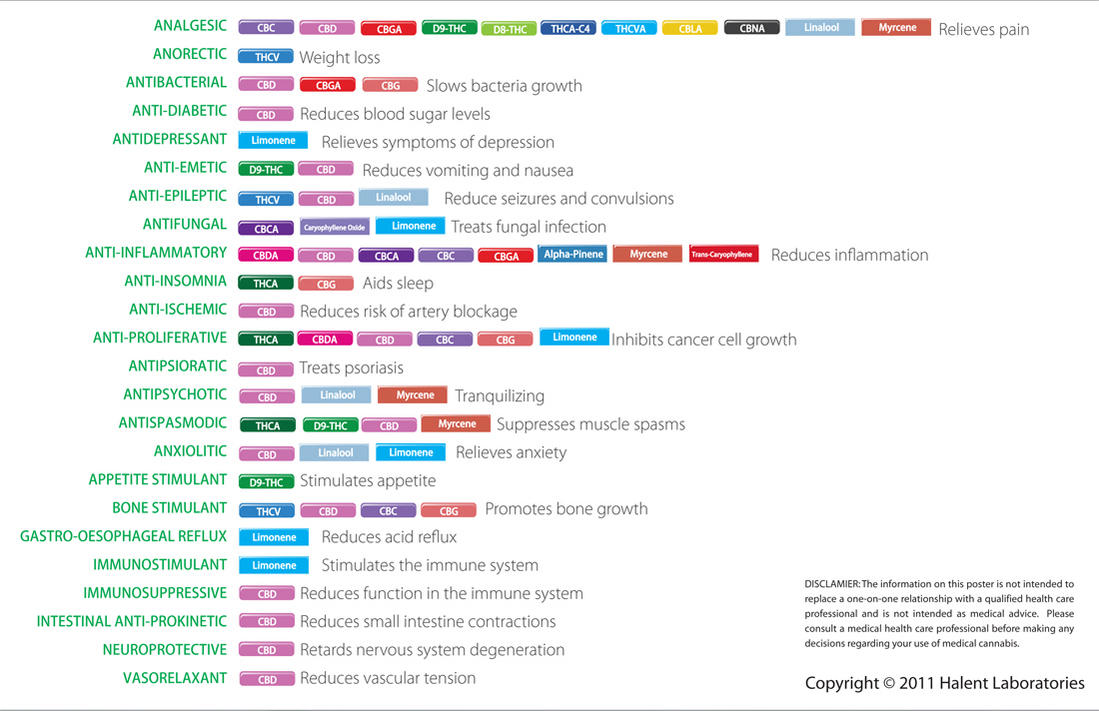This great article came from theleafonline.com and was written by Mitchell Colbert:
July 29, 2014
In this issue of Cannabinoid Profiles, the properties of CBDa are broken down and the therapeutic benefits are explored. Get to know this cannabinoid and discover what studies are currently being done to determine its wide variety of medicinal benefits.
Cannabidiolic Acid (CBDa) is one of the four possible outcomes of Cannabigerolic acid (CBGa) being processed into cannabigerol (CBG), Cannabichromic acid (CBCa), Tetrahydrocannabibolic acid (THCa), and CBDa. CBGa is processed into other cannabinoids by synthase enzymes, and the CBDa synthase was first purified and isolated in 1996. Coincidentally, this was the same year California passed Prop 215 and became the first medical cannabis state.
Until recently, CBDa was thought to be a minor cannabinoid and only be a small part of the overall cannabinoid profile. Higher amounts have been seen in ruderalis strains and recent hybrids like Cannatonic C-6 and ACDC have elevated levels of CBDa at potentially higher levels than THCa. Just like THCa, when heated up CBDa decarboxylates; as THCa becomes THC, so CBDa becomes CBD. Like CBD, CBDa is not psychoactive. While there hasn’t been much research done on CBDa yet, the research that has been done is quite promising. It appears to have anti-emetic effects as well as anti-proliferative effects, making it ideal for fighting cancer.It also has been shown to be an anti-inflammatory and to possess anti-bacterial properties.
Therapeutic Uses
Antibacterial – Slows bacterial growth.
Anti-Emetic – Reduces vomiting and nausea.
Anti-inflammatory – Reduces inflammation systemically.
Anti-Proliferative – Inhibits cancer cell growth.
Currently Being Studied For
Anti-Bacterial: Leizer et al (2000) mention a strong correlation between the levels of CBDa in a plant and the CBD levels of the plant after synthase. They also mention that more CBDa present will mean greater antimicrobial potency in the resulting CBD. They do not explain the mechanisms at work.
Anti-Emetic: A 2013 study shows that CBDa reduces vomiting and nausea by increasing activity at the 5-HT1A receptor. This means that CBDa can be used as a non-psychoactive alternative to THC to prevent vomiting and nausea. This isn’t the first study to show this, as a 2011 study found that CBDa functioned as an anti-emetic but did not pin the relation to the 5-HT1A receptor. More research should be done to properly explore this exciting new medicinal use for CBDa.
Anticipatory Nausea: Anticipatory Nausea (AN) is a condition where someone vomits due to neutral stimuli, before they are actually nauseous. AN is very common in patients receiving chemotherapy, with roughly 29% developing it. AN appears to be the result of classical conditioning; given enough exposures to neutral stimuli, like the smells of the chemotherapy room, a susceptible person will begin to vomit before even receiving treatment. In a 2014 study, CBDa was shown to be a very effective treatment for sufferers of AN. In 2013, the same group of researchers found that CBDa was an effective treatment for acute nausea in chemotherapy patients.
Cancer: In 2012 CBDa joined THC, CBD, and numerous other cannabinoids that are anti-proliferatives. These cannabinoids control the growth of cancerous tumors. Takeda et al (2012) found that CBDa could inhibit the migration of human breast cancer cells. This government funded study recognized CBDa’s potential to mitigate the effects of cancer even in its more aggressive forms.”The data presented in this report suggest for the first time that [a] component in the cannabis plant, CBDA, offers potential therapeutic modality in the abrogation of cancer cell migration, including aggressive breast cancers.”
*Note: Decarboyxlation - A chemical reaction that removes a carboxyl group and releases CO2, often triggered by heat.
Formula: C22H30O4
Molecular Mass: 358.2144 g/mol
Decarboxylation Point: 120+ °C (248 °F)
Boiling Point: ????
LD50 (Lethal Dose): 5,000mg/kg for rats, Inhalation TCLO (human): 15,000 mg/m3 mg/kg (Compare to Nicotine: for mice – 3mg/kg, for humans – 40–60 mg/kg),


